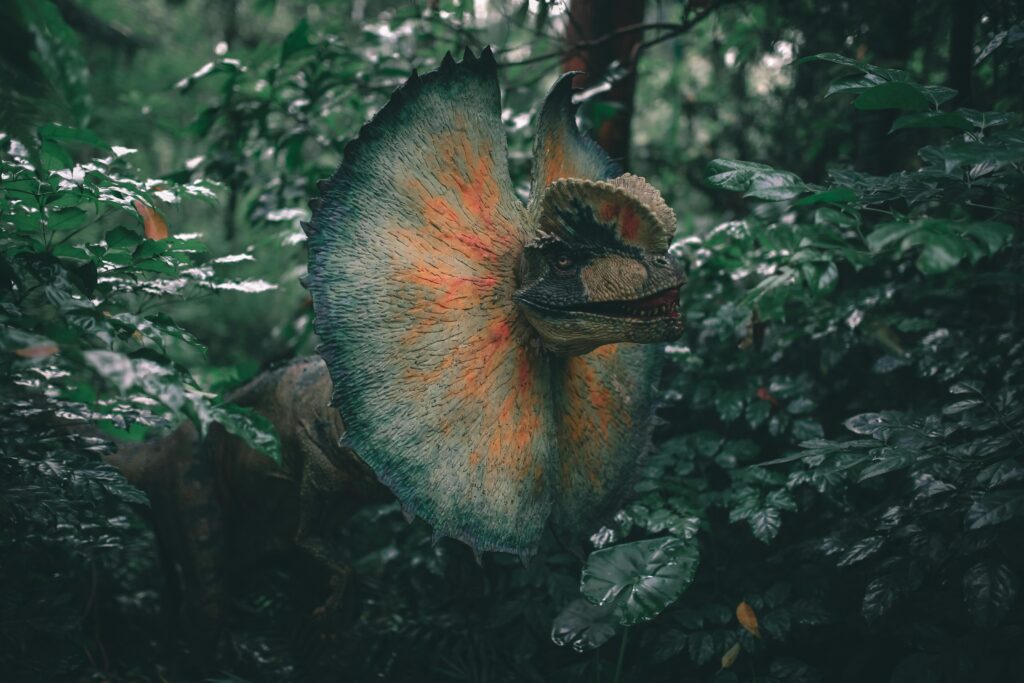Paleontology is a field in constant flux, where new discoveries regularly reshape our understanding of prehistoric life. For decades, certain assumptions about dinosaurs remained unchallenged—until remarkable fossil finds forced scientists to reconsider long-held beliefs. The following seven dinosaurs have dramatically altered our perception of these ancient creatures, proving that our understanding of dinosaur biology, behavior, and evolution continues to evolve with each new discovery. From feathered predators to bizarre adaptations, these extraordinary dinosaurs demonstrate that prehistoric life was far more complex and diverse than we previously imagined.
Spinosaurus: The Swimming Dinosaur

Long depicted as a typical terrestrial predator with a dramatic sail, Spinosaurus aegyptiacus shocked the scientific community when new fossil evidence revealed it was primarily aquatic—the first known swimming dinosaur. The 2014 discovery of a more complete specimen revealed paddle-like feet, dense bones for buoyancy control, and a crocodile-like snout perfect for catching fish. Further research published in 2020 analyzed its unique tail structure, which featured an unexpected fin-like shape that would have powered it through water with remarkable efficiency. This revelation completely transformed our understanding of dinosaur ecology, proving these animals weren’t confined to land environments as previously thought. The swimming adaptation of Spinosaurus suggests dinosaurs were even more diverse in their ecological niches than paleontologists had imagined, occupying nearly every habitat available during the Mesozoic era.
Yutyrannus: The Feathered Giant
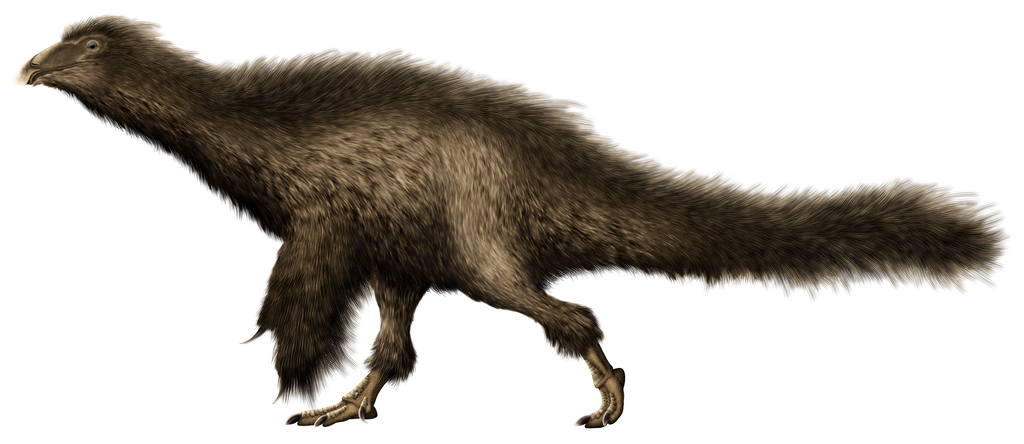
Before the discovery of Yutyrannus huali in 2012, scientists believed that only smaller dinosaurs possessed feathers, with larger theropods having mostly scaled skin. This magnificent predator—whose name means “beautiful feathered tyrant”—upended that assumption entirely. At 30 feet long and weighing over 1.5 tons, Yutyrannus was a massive carnivore nearly the size of a T. rex, yet it was covered in primitive feather-like filaments that likely provided insulation in the cooler climate of Early Cretaceous China. The discovery suggested that many large predatory dinosaurs, possibly including T. rex itself, might have had feathers at some stage of their life. This revelation dramatically changed artistic reconstructions of large theropods and reinforced the evolutionary connection between dinosaurs and modern birds. Yutyrannus represented a crucial missing link in understanding how feathers evolved before they were repurposed for flight.
Deinocheirus: The Humpbacked Oddity

For nearly 50 years after its discovery in 1965, Deinocheirus mirificus was known only from a pair of enormous 8-foot-long arms, making it one of paleontology’s greatest mysteries. Speculation ran wild about what this creature might have looked like, with many assuming it was a fearsome predator with deadly claws. The truth, revealed in 2014 when more complete specimens were discovered, was far stranger than anyone had imagined. Deinocheirus turned out to be a bizarre ornithomimosaur with a duck-like bill, a pronounced sail-like hump on its back, and a body plan unlike anything paleontologists had predicted. Perhaps most surprisingly, this 11-ton giant appears to have been primarily a fish-eater and plant forager rather than a predator. This spectacular example of convergent evolution with modern water birds demonstrates that dinosaurs evolved into ecological niches we hadn’t previously considered, illustrating that dinosaur diversity extended far beyond our initial classifications and expectations.
Kulindadromeus: The Feathered Herbivore

The discovery of Kulindadromeus zabaikalicus in 2014 revolutionized our understanding of feather evolution in dinosaurs. Prior to this finding, feathers and feather-like structures were thought to be exclusive to theropod dinosaurs—the lineage that eventually gave rise to birds. Kulindadromeus, however, belonged to an entirely different dinosaur lineage: the ornithischians, which included familiar herbivores like Triceratops and Stegosaurus. This small plant-eater, about the size of a turkey, possessed not only simple filamentous proto-feathers but also scales and bizarre ribbon-like structures covering different parts of its body. The implications were enormous; if both major dinosaur lineages had feather-like coverings, this suggested that the common ancestor of all dinosaurs might have possessed such features, pushing the origin of proto-feathers back much earlier than previously believed. This discovery fundamentally altered our understanding of dinosaur appearance, suggesting that feathers were not an adaptation for flight but evolved initially for insulation or display.
Yi qi: The Dinosaur That Glided
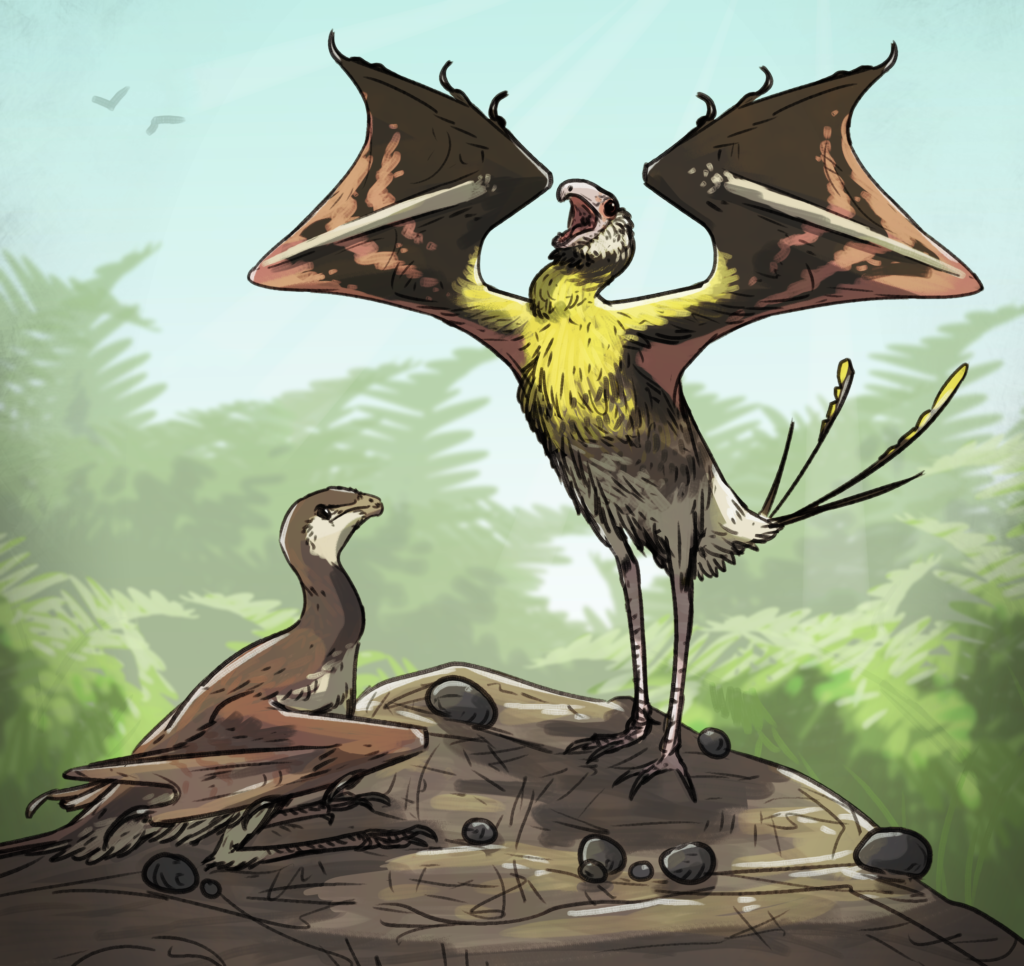
In 2015, paleontologists announced the discovery of Yi qi (pronounced “ee chee”), one of the most bizarre dinosaurs ever found. This small feathered dinosaur, whose name means “strange wing” in Mandarin, possessed a truly unique adaptation: membranous wings supported by a rod-like bone extending from each wrist. This structure was entirely unknown in any other dinosaur and resembled the wing design of modern bats and flying squirrels rather than birds. The revelation that some dinosaurs had evolved membrane-based flight or gliding completely independently from the feather-based flight of other dinosaur lineages was revolutionary. Yi qi demonstrated that dinosaurs explored multiple evolutionary pathways toward aerial locomotion, showing greater experimentation than scientists had previously recognized. This discovery emphasized that dinosaur evolution wasn’t a simple, linear progression toward modern birds but involved numerous evolutionary experiments, many of which left no living descendants. Yi qi represents one of paleontology’s most important examples of convergent evolution and the diversity of adaptations within Dinosauria.
Halszkaraptor: The Semi-Aquatic Predator

Discovered in Mongolia and described in 2017, Halszkaraptor escuilliei represented a completely unexpected type of dinosaur that blurred the lines between terrestrial and aquatic adaptations. This peculiar creature combined features never before seen together in a dinosaur: a long swan-like neck, flipper-like forelimbs, and a bill filled with sensitive sensory organs perfect for detecting prey underwater. Advanced scanning techniques revealed that its bone density and structure closely resembled those of modern diving birds. Perhaps most surprisingly, Halszkaraptor belonged to the dromaeosaurid family—the same group as the terrestrial Velociraptor—yet had evolved semi-aquatic adaptations similar to modern penguins and waterfowl. This discovery demonstrated that raptors were far more ecologically diverse than previously thought, with some lineages adapting to aquatic environments rather than remaining purely terrestrial predators. Halszkaraptor provided compelling evidence that dinosaurs successfully colonized nearly every ecological niche available during their reign, including those we once thought they had avoided.
Chilesaurus: The Vegetarian Predator
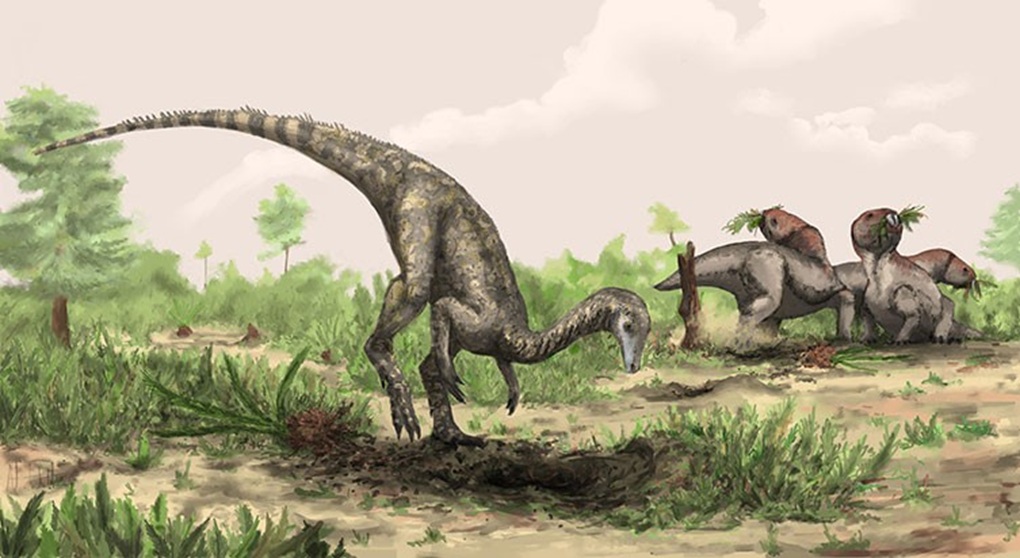
When Chilesaurus diegosuarezi was first discovered in Chile in 2015, paleontologists were baffled by its unusual combination of features. While clearly belonging to the theropod group—typically carnivorous dinosaurs including T. rex and Velociraptor—Chilesaurus possessed a small head, long neck, and leaf-shaped teeth perfect for processing plant material. This bizarre dinosaur has been described as a “evolutionary mosaic,” combining features from different, unrelated dinosaur groups in ways that paleontologists hadn’t thought possible. Most significantly, Chilesaurus represented one of the clearest examples of a primarily carnivorous dinosaur lineage evolving toward herbivory, a transition previously thought to be extremely rare among theropods. The discovery forced scientists to reconsider how dietary adaptations evolved within dinosaur groups, suggesting greater dietary flexibility than previously recognized. Some paleontologists now propose that Chilesaurus might represent an early evolutionary experiment leading toward the bizarre therizinosaurs, another group of herbivorous theropods, highlighting the complex evolutionary pathways dinosaurs followed during their 165-million-year reign.
Challenging the “Cold-Blooded” Assumption
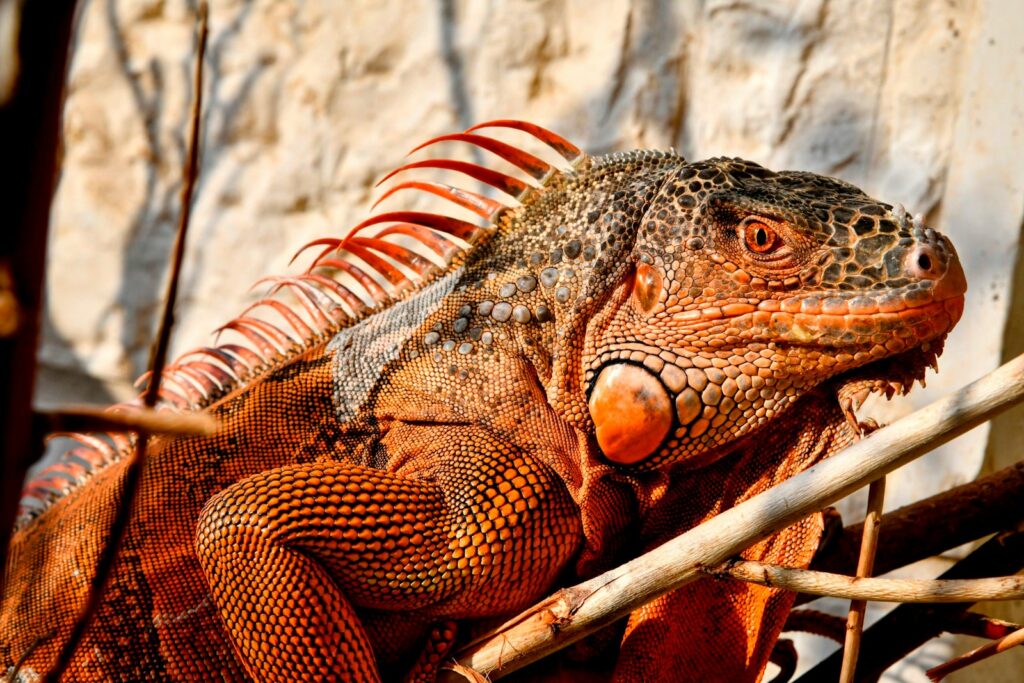
For decades, dinosaurs were assumed to be reptilian and therefore cold-blooded (ectothermic), but recent evidence from multiple species has dramatically altered this view. Microscopic analysis of dinosaur bone structures shows growth patterns more similar to warm-blooded mammals and birds than reptiles. Studies examining the oxygen isotope ratios in dinosaur teeth suggest they maintained consistent internal temperatures regardless of external conditions—a hallmark of endothermy or “warm-bloodedness.” Additionally, the discovery of feathers or feather-like structures in numerous dinosaur species across multiple lineages provides evidence for insulation that would be unnecessary in truly cold-blooded animals. Research published in Nature in 2020 analyzed the metabolic rates of dinosaurs using a method examining respiratory molecules preserved in eggshells, providing the strongest evidence yet that many dinosaurs maintained high body temperatures through internal metabolic processes. This fundamental shift in understanding dinosaur physiology impacts every aspect of how we imagine their behavior, from hunting strategies to social interactions.
Altering Our Understanding of Dinosaur Coloration

Until recently, the colors of dinosaurs were considered purely speculative, with artists taking creative license in reconstructions. This changed dramatically with the discovery that melanosomes—cellular structures containing pigment—could be preserved in exceptionally well-preserved fossils. The first breakthrough came with Sinosauropteryx, a small theropod whose tail was proven to have a series of russet-colored bands, the first scientifically confirmed dinosaur coloration. Later studies identified Microraptor as having iridescent black feathers similar to modern crows, while Anchiornis was shown to have a complex pattern of black, white, and rufous plumage. These discoveries completely transformed our visualization of dinosaurs from the drab, reptilian creatures of older reconstructions to vibrant, bird-like animals potentially using color for camouflage, species recognition, and mating displays. The identification of these color patterns has significant implications for understanding dinosaur behavior, suggesting complex social structures and visual communication systems previously unappreciated in paleontological research.
Revising Dinosaur Growth Rates

Conventional wisdom once held that dinosaurs, like their reptilian relatives, grew slowly over many decades to reach their impressive sizes. This assumption was completely overturned through the study of bone microstructures, which revealed growth rings similar to tree rings that could be analyzed to determine growth rates. Tyrannosaurus rex, once thought to have taken 100 years to reach full size, has now been shown to have achieved its massive proportions in just 20 years, with an adolescent growth spurt adding up to 4.6 pounds per day during peak development. Similarly, studies of Maiasaura, a duck-billed dinosaur, demonstrated that it reached adult size in just 7-8 years rather than the previously assumed 30+ years. These rapid growth rates are much more consistent with warm-blooded metabolism than cold-blooded physiology, further supporting the theory that many dinosaurs had metabolic systems more similar to modern birds than reptiles. This revised understanding has significant implications for dinosaur population dynamics, suggesting faster generational turnover and potentially different reproductive strategies than previously modeled.
Social Behavior: More Complex Than We Thought
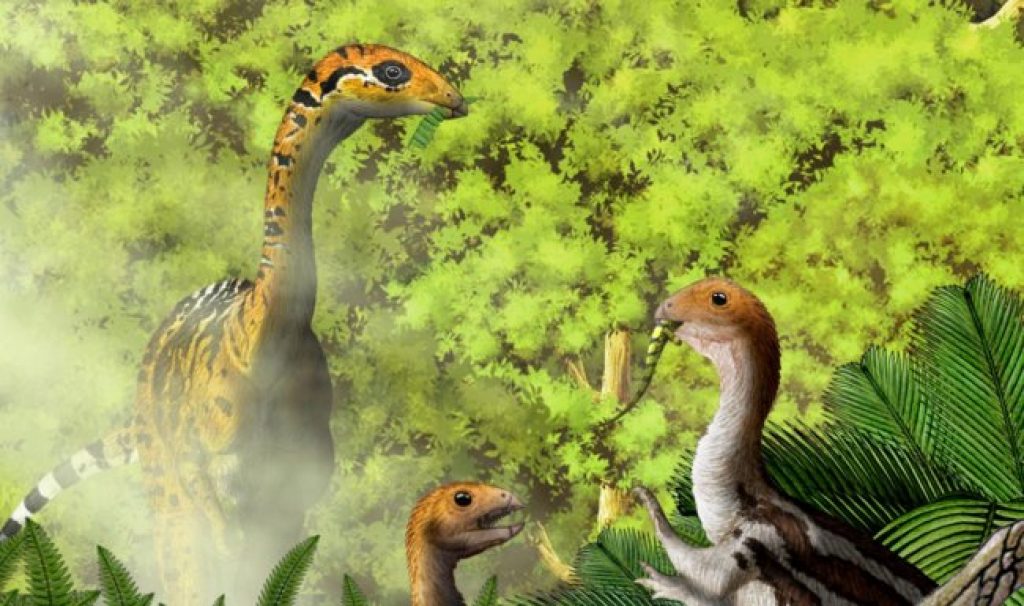
Dinosaurs were long portrayed as solitary creatures or simple herd animals with limited social interactions, but fossil evidence has dramatically revised this view. Massive bone beds containing hundreds of individuals of species like Maiasaura and Edmontosaurus suggest complex herd structures potentially featuring age segregation and coordinated migration patterns. The discovery of six Deinonychus specimens surrounding a larger herbivore suggests pack hunting behavior and cooperative strategies previously unrecognized in dinosaurs. Perhaps most compelling are trackway sites showing multiple dinosaur species moving in the same direction, indicating possible interspecies associations or coordinated responses to predators or environmental factors. Nesting sites with multiple generations present, such as those found for the horned dinosaur Protoceratops, suggest extended parental care and family groups. These discoveries collectively paint a picture of dinosaurs as socially sophisticated animals with communication systems, behavioral traditions, and complex interspecies relationships far beyond the simplistic depictions that dominated scientific thinking throughout most of the 20th century.
Reconsidering Dinosaur Vocalizations

The iconic roars of dinosaurs depicted in popular media have been called into question by recent anatomical studies of dinosaur vocal apparatus. Contrary to popular portrayals, many dinosaurs likely lacked the laryngeal structure necessary for mammalian-style vocalization. However, this doesn’t mean dinosaurs were silent—research on dinosaur relatives like crocodilians and birds suggests they may have utilized closed-mouth vocalizations, infrasound (sounds below human hearing), or bird-like calls depending on their specific anatomy. The discovery of a resonating chamber in the elaborate crest of Parasaurolophus indicates this hadrosaur could produce low-frequency sounds for communication across long distances, possibly for herd coordination. Similarly, the complex nasal passages of ceratopsians like Triceratops may have functioned partly as sound-producing structures. These findings suggest dinosaur communication was likely diverse and sophisticated, utilizing acoustic adaptations specifically evolved for their body plans rather than resembling the mammalian vocalization systems we’re more familiar with. This reinterpretation challenges us to imagine prehistoric soundscapes quite different from those typically portrayed in entertainment.
The Future of Dinosaur Discoveries

The pace of paradigm-shifting dinosaur discoveries shows no signs of slowing, with new technologies promising even more revolutionary insights in coming years. Advanced imaging techniques like synchrotron radiation and neutron tomography now allow paleontologists to examine internal structures of fossils without damaging them, potentially revealing soft tissue details previously considered lost to time. Molecular paleontology continues to push boundaries, with recent studies successfully identifying proteins and possible DNA fragments from dinosaur remains once thought too degraded for such analysis. Geographic diversification of paleontological research, with increasing work in previously understudied regions like South America, Africa, and Asia, promises to fill significant gaps in our understanding of dinosaur evolution and diversity. Additionally, the application of artificial intelligence to identify subtle patterns in fossil data may reveal evolutionary relationships and ecological interactions invisible to human observation alone. These advances suggest we are entering a golden age of dinosaur paleontology where many more of our fundamental assumptions will likely be challenged and revised as new evidence emerges.
Conclusion

Our understanding of dinosaurs has undergone a remarkable transformation in recent decades. Far from the slow, cold-blooded reptiles once imagined, we now recognize dinosaurs as dynamic, diverse creatures that dominated terrestrial ecosystems for over 165 million years through sophisticated adaptations and behaviors. The seven dinosaurs highlighted here—Spinosaurus, Yutyrannus, Deinocheirus, Kulindadromeus, Yi qi, Halszkaraptor, and Chilesaurus—represent just a fraction of the discoveries that have revolutionized paleontology. Each fossil find reminds us that dinosaur science remains a vibrant, evolving field where today’s certainties may become tomorrow’s outdated theories. As new technologies and discoveries continue to emerge, we can expect even more surprises that will further transform our understanding of these extraordinary animals and their complex world.

